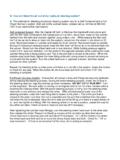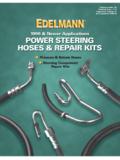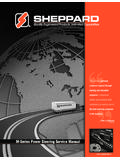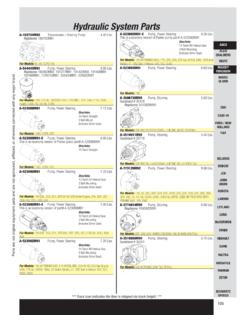Transcription of Electric Power Assisted Steering System for Automobiles
1 UNESCO EOLSSSAMPLE CHAPTERSELECTRICAL ENGINEERING Vol. III - Electric Power Assisted Steering System for Automobiles - M. F. Rahman Encyclopedia of Life Support Systems (EOLSS) Electric Power Assisted Steering System FOR Automobiles M. F. Rahman School of Electrical Engineering & Telecommunications, University of New South Wales, Sydney, Austrailia Keywords: Torque sensor, Torsion Bar, Position Sensor, Electric Power Steering System , Brushed DC motor, Permanent Magnet AC Synchronous Motor, Power Converter, Torque Control, Rack and Pinion, Torque Assist Map, Steering Angle, Electronic Control Unit Contents 1.
2 Introduction 2. Essential components of an EPAS System 3. Torque sensors for EPAS Strain Gauge Sensors Optical Torque Sensors Surface Acoustic Wave Torque Sensor Magnetostrictive and Magnetic Torque Sensors Piezoelectric Torque Sensor 4. Other sensors Current Sensor Angular Position and Speed Sensors 5. Actuators for Electric Power Steering PM Brushed DC Motor PM AC Synchronous Motor 6. Operating Conditions and Specifications 7. EPAS System Controller Torque Control Loop Torque Assist Map Damping Control Reverse Sliding Load and Return to Neutral position 8.
3 From EPAS to Steer-by-Wire 9. Conclusion Glossary Bibliography Biographical Sketch Summary Electric Power Steering for Automobiles is primarily an energy saving scheme. It is a recent innovation, which is on the verge of being introduced into Automobiles throughout the world. In a few years, it is expected to be in widespread use, just to cut down the energy usage in modern vehicles, if for nothing else. Further advantages may include enhanced flexibilities in the location of the Steering System , the tuning of the Steering System to cater to the needs of a specific automobile or an individual driver and UNESCO EOLSSSAMPLE CHAPTERSELECTRICAL ENGINEERING Vol.
4 III - Electric Power Assisted Steering System for Automobiles - M. F. Rahman Encyclopedia of Life Support Systems (EOLSS) the reliability which are currently lacking in the hydraulic Assisted Power Steering System . This chapter starts by tracing the history of developments in the Steering systems for Automobiles . It then describes the mechanisms involved, and the nuts and bolts of the all Electric Power Steering systems for Automobiles . Actuators, sensors and controllers that make Electric Power Steering a reality in modern Automobiles are described subsequently.
5 1. Introduction The Steering System of an automobile serves two main functions: firstly it allows the driver to make the vehicle follow a desired path or trajectory without requiring excessive physical effort and secondly, it assists the driver to judge the driving conditions by allowing some feedback. The latter is a subtle aspect of the Steering System , with the driver in the feedback loop striving to minimize the error which the vehicle may have from the desired path.
6 Figure 1: Functional schematics of a hydraulic Power Assisted Steering systems (HPAS) UNESCO EOLSSSAMPLE CHAPTERSELECTRICAL ENGINEERING Vol. III - Electric Power Assisted Steering System for Automobiles - M. F. Rahman Encyclopedia of Life Support Systems (EOLSS) The hydraulic Steering System of present-day Automobiles which appears so natural and appropriate, took nearly 50 years to mature after the first introduction. Prior to this time, drivers struggled to maneuver the vehicles for parking, at low speed.
7 At high speed, there was also the problem of finding the right sensitivity and stability. As engine Power increased and vehicles grew larger, the effort required of the driver to steer the vehicles satisfactorily became nearly of superhuman proportions. During World War II, this was the realization of many drivers who maneuvered sizeable vehicles in rugged terrains. Efforts to introduce Power Assisted Steering began in earnest immediately after the war. Generals Motors in the USA, and Bishop in Australia developed and introduced the first hydraulically Assisted Power Steering System in the 1950s.
8 The early hydraulic systems used re-circulating ball Steering coupled with a belt driven hydraulic pump. The hydraulic pressure created with rotary vane pump reduced the Steering effort required by the driver to overcome the rack load on the Steering System . This also provided for better Steering stability at high vehicle speeds, since the driver had hydraulic pressure appropriately reduced, assisting in the control of the linkages at all times. A second System , a rack and pinion Steering System (see Figure 2), was developed and used in many lighter and sportier vehicles.
9 Even though no Power assistance was required for these types of vehicles for many years, eventually they too started to use hydraulic Power assistance. In a hydraulic Power Steering System , a hydraulic pump coupled to the engine shaft supplies the necessary oil pressure to either side of a valve, as indicated in Figure 1. When the Steering wheel turnes clockwise or counterclockwise, oil pressure builds up, more on one side of the valve than the other (see Figure 1(b)), thus assisting the turn.
10 In the straight-ahead position, the pressure on both sides of the valve is the same, thus neutralizing any assist. Once a turn is completed, the control valve opens a return passageway that allows the oil to return to the reservoir, allowing it to circulate through the System again. The HPAS has evolved over a long time and automotive engineers have done a superb job in creating systems tailored for all weight, size and Power classes of vehicles. However, numerous shortcomings and disadvantages plague the HPAS.
















